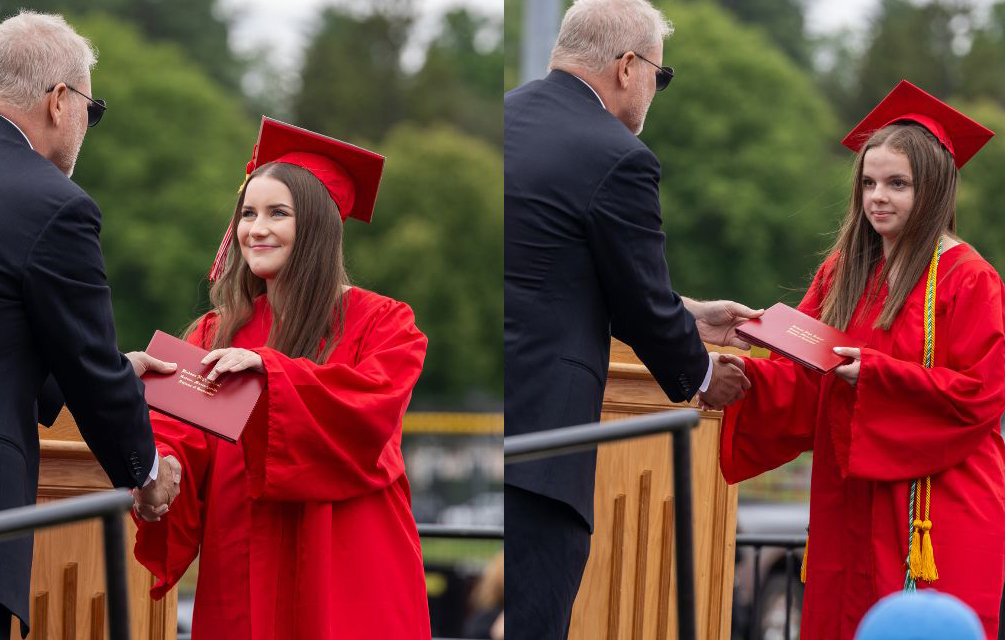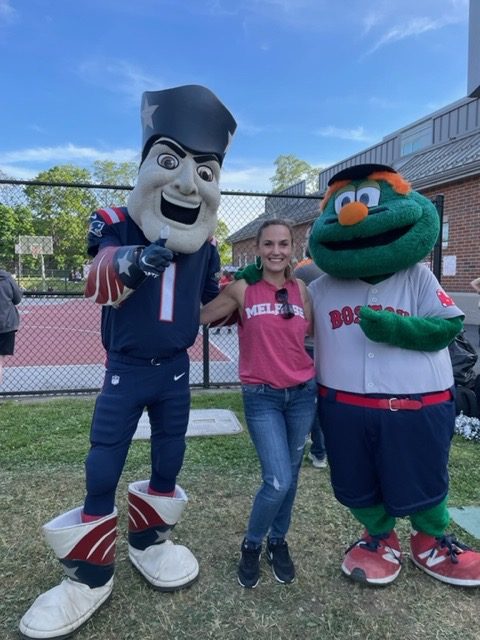
by Alison Eadie
Walk into an engineering or robotics class at Hudson High School and likely the first thing you’ll notice is the lack of girls. Engineering and physics teacher Rebekah Whitesel has two girls in one engineering class. Robotics and engineering teacher Ryan Dailey has four or five female students in Intro to Engineering/Design, none in robotic design, and the same sole girl in both Engineering Development/Design and Digital Electronics.
Dailey has taught at Hudson High for eight years, and each year his classes are “almost exclusively male based.” The closest to equality his classes have ever been was nineteen males and five females.
So what causes this trend not only at Hudson High School, but on a national level, and what is being done to remedy the situation? “I think it’s just the gender stereotype that does exist that girls can’t do it,” Dailey says, “when the reality is if you talk to most people that teach it, we find that female students do better in our classes than males do.”
“Engineering is stereotypically a male dominated field,” says Whitesel. She believes that because of this, female students are hesitant to sign up for the class because they don’t think their friends will sign up, and they will be isolated.
Senior Miranda Eiben has taken four classes where she was the only female, and a few others where she was one of a few. “From what I’ve heard from my friends, they don’t feel like they’d feel welcome there, they don’t think it’s where they belong,” she says.
When Eiben first entered the Intro to Robotics classroom as a freshman, she quickly realized she was the only girl in the class. There were an odd number of students, so for group work, Miranda was by herself. She says the male students completely ignored her the first week of class, but this fueled her determination to prove her talents. As one of the only students in the class with previous experience with the robots, Eiben got first or second place in all of the competitions, working all by herself.
“It was a huge defining moment, and that was the class that made me want to become an engineer and work past all of this stuff. Now I just don’t care that I’m the only girl,” Eiben says. The guys give her more respect now and even copy her ideas. Being ignored and underestimated and then ending up at the top of the class was “a truly gratifying experience,” Eiben says.
Eiben’s parents are both engineers, as well as the majority of her family. “I’ve been kind of surrounded by the mindset my entire life, so it’s really hard to imagine not thinking as engineers do,” she says. Only 20% of employees in her mother’s workplace are female. Eiben plans to study engineering in college and says that a ratio of 30 girls to 70 boys is common. In fact, the closest to equality she has seen researching colleges is 40/60.
“There’s this deep gap between females and males that doesn’t really make any sense to me. I really think what we need to focus on is getting little girls into it,” she says. Eiben particularly thinks that childhood toys should become less stereotyped. Goldieblox™, for example, makes toys for young girls that focus on engineering. So “instead of the traditional boys play with legos, girls play with dolls kind of thing,” Eiben says, girls can discover their innovative abilities from a young age.
The Hudson Public School district has a new initiative this year where every student at the new Quinn Middle School must take an engineering elective. It’s a partnership with Project Lead the Way here at the high school. Dailey hopes “we’ll get a few more girls at a younger age to realize that they can do this rather than just settling that they can’t do it because they just make up their minds that engineering’s just not for them. It’s a boy thing.”
Whitesel has attended conferences on a national level to address ways to interest young girls in STEM (science, technology, engineering, and math) careers. This October, she brought some female students to a one-day conference at UMass Amherst. They rotated between hands-on activities and motivational speakers who work in the STEM career fields.“The thinking behind it is that sometimes girls feel more comfortable to explore science or engineering topics when only girls are around them. It was a great learning experience for the students and myself,” says Whitesel.






Amy Vessels • Mar 16, 2014 at 1:35 pm
Good work! A well-researched look at an important topic.
Anonymous • Mar 7, 2014 at 2:34 am
The real issue is patriarchy. Men dominate the workforce. Gender forced stereotypes categorize women as unable to comprehend this kind of work. It’s not about showing women that they are able to do this type work, it’s about teaching men to realize the gender gap in the workforce.
Rebekah Whitesel • Mar 6, 2014 at 8:47 pm
Good work, Ali. You have collected some good perspectives. It is helpful to hear Miranda’s view and see how she has grown from it.
Karen Eadie • Mar 6, 2014 at 8:03 pm
Very interesting article, Ali. It’s great that Hudson schools are initiating changes, such as the new classes at Quinn, to address this problem. Careers in engineering can be very lucrative and it would be a shame for girls to miss out on opportunities simply because they don’t feel welcome. Sounds like Miranda is a trailblazer!
Joshua Otlin • Mar 6, 2014 at 4:46 pm
Great piece, Alison. Thanks for shining a light on this important educational issue and thanks for spotlighting Miranda’s great work.